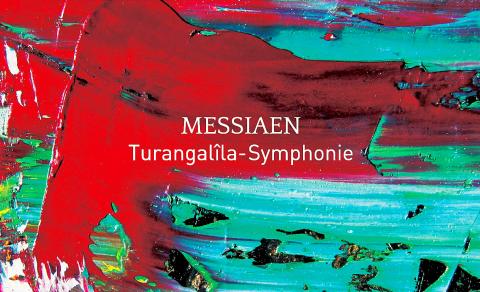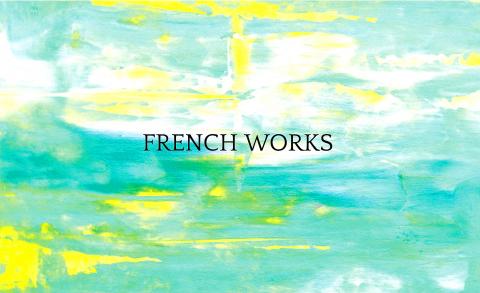MESSIAEN, Turangalila-Symphonie, Lu Shao-chia and Taiwan Philharmonic Live, MU 130001/ NSO 021 [2 CDs], but only available as part of the seven-CD set MU 130001-4/ NSO 021-024;
FRENCH WORKS, Debussy, Ravel, Cesar Franck, Lu Shao-chia and Taiwan Philharmonic Live, MU 130004/ NSO 024 [2 CDs]
This latest consignment of CDs is the last for the time being from Taiwan’s National Symphony Orchestra (NSO), known abroad as the Taiwan Philharmonic because China objects to the word “national,” in their NSO Live series. The focus this time is on French music, with four CDs on offer featuring items by Messiaen, Cesar Franck, Debussy and Ravel, and an extra track from Wagner thrown in for good measure.

There is no doubt whatsoever that Messiaen’s Turangalila-Symphonie (1949) is the masterpiece at the heart of these CDs, both in terms of the work itself, the NSO’s superlative, indeed incomparable performance and the heights both aspired to and achieved. The composition, one of the summits of world modernism, is simply on another level from the other works on these discs. And it’s a tribute to Lu Shao-chia (呂紹嘉) and the entire NSO that their performance is in every way star-studded, brilliant and unforgettable.
It’s a massive work in 10 movements with the over-riding theme of cosmic love, but also cosmic destruction. It requires a large orchestra augmented with piano, glockenspiel, celesta, vibraphone and the electronic instrument known as the ondes Martenot, and the influence of the percussive Balinese gamelan is noticeable. The symphony’s title, incidentally, is taken from two Sanskrit words, meaning “flow” and “love/death.”
It doesn’t make for conventionally easy listening, but, as the NSO play it anyway, it’s the sort of work that could change your life. Listen to it once a week and it will come to sound like Mozart. Occupying one and a half CDs, it’s never for a moment dull, morose or introspective, but invariably brightly-colored, thrilling and exalted. Messiaen studied birdsong, and at times this sounds like all the weirdest birds in the world singing together. And it’s hard to imagine there’s a more mesmerizing performance of it anywhere in the world than the NSO’s.

The recording too is ear-splittingly incisive. The piano solo is brilliantly played by Roger Muraro and the ondes Martenot, in both the Messiaen and the Wagner (see below), by Valerie Hartmann.
Incidentally, I once almost met Messiaen. He was the organist of Paris’s Sainte-Trinite church, and I went there one Saturday afternoon in the 1980s hoping to catch a glimpse of him. And there he was, practicing on the organ, presumably for the next day’s service. After a few minutes he closed the organ lid, came down some rickety wooden stairs, and left the building just in front of me.
Nothing can compare with the Messiaen, but very welcome is the Cesar Franck item, Psyche. Franck is a composer who repays any amount of attention. Faure, Delibes, Widor and Saint-Saens all attended his Paris funeral, and Chausson and Duparc were his students. His best-remembered works are his one symphony, his violin sonata, his piano quintet and his symphonic variations for piano and orchestra. Psyche is rarely performed, and if it is it’s usually just the last movement, Psyche and Ero.
But when you hear this version of the full orchestral suite, lasting some 25 minutes, you can’t help be astonished at the beauty and sensuousness of the music. Franck is often thought of as a devout Catholic who specialized in bravura performances on new church organs, but this is a setting of the story, taken from ancient Roman writer Apuleius’s The Golden Ass, of the god Eros (ie Cupid) and the beautiful girl Psyche. This account of the loss of Psyche’s virginity to the god of love became extremely popular at various times in European history, both with painters and writers, and attempts by Christians to make it into an allegory of the union of the soul and the body were largely ignored.
The pious Cesar Franck may have thought he was setting a Christian version, but the music tells a different story. The narrative in Apuleius is very long, but the central episode, Psyche seeing the body of her sleeping lover, something she’d been forbidden to do, is dominant throughout the tradition. There are four movements in Franck’s orchestral suite — there’s an even longer version involving a choir — and Lu renders them all with extravagant virtuosity. This is a magnificent version of a magnificent, but all too infrequently heard, work.
The summit of erotic longing in classical music is usually thought to be Wagner’s opera Tristan und Isolde, and its opening Prelude and concluding Liebestod are included on one of the Messiaen discs. These excerpts are most notable for the use of the ondes Martenot to replace Isolde’s soprano voice. It has to be said that the tone of this instrument isn’t here particularly distinctive, and that its function is largely to allow a totally instrumental version of this famous music. As for the performance, it’s up to the NSO’s usual giddily high standard, but I did miss the soprano.
Then there’s Ravel’s Daphnis and Chloe Suite No 2. This is actually the complete last scene from a ballet Ravel wrote for the Ballets Russes in 1912. The story is taken from the 3rd century Greek author Longus and tells of how Daphnis loses his beloved Chloe (abducted by pirates), only to find her again with the aid of the god Pan. This scene has dawn breaking over a sleeping Daphnis, his finding Chloe, and then the two of them miming the love of Pan for a nymph in honor of the god’s help in re-uniting them.
It’s beautifully played by the NSO, though when it’s described in the program notes as containing some of “the richest, most sumptuous and magical sounds ever drawn from an orchestra” you can’t help sensing considerable exaggeration.
Superbly played too is Ravel’s La Valse (“The Waltz”), a 14-minute ballet commissioned but rejected as undanceable by the Ballet Russes in 1920. It depicts pre-World War I Vienna, wild and party-loving, but finally laid waste by the horrors of war. And finally there’s Debussy’s over-familiar La Mer(“The Sea”, 1905), presumably included because no collection of French music from this period would be complete without this composer.
These are all excellent CDs, with the Turangalila-Symphonie totally outstanding by any criterion. They are available from the following sources, as well at all NSO concerts, where the price is lower. It’s necessary to point out that, for copyright reasons, the two CDs containing Messiaen’s Turangalila-Symphonie and the Wagner item are, unlike the others, available only as part of the full seven-CD boxed set, ie the four CDs reviewed here and the three reviewed in the Taipei Times on May 19. The other five CDs are on sale as three boxed items, all available individually.
◆ www.books.com.tw/exep/cdfile.php?item=0020176394
◆ www.pcstore.com.tw/miami/M15467969.htm
◆ www.5music.com.tw/ListArt.asp?art=434495679302&mut=D
◆ www.eslite.com/product.aspx?pgid=1004262342295877

May 26 to June 1 When the Qing Dynasty first took control over many parts of Taiwan in 1684, it roughly continued the Kingdom of Tungning’s administrative borders (see below), setting up one prefecture and three counties. The actual area of control covered today’s Chiayi, Tainan and Kaohsiung. The administrative center was in Taiwan Prefecture, in today’s Tainan. But as Han settlement expanded and due to rebellions and other international incidents, the administrative units became more complex. By the time Taiwan became a province of the Qing in 1887, there were three prefectures, eleven counties, three subprefectures and one directly-administered prefecture, with

It’s an enormous dome of colorful glass, something between the Sistine Chapel and a Marc Chagall fresco. And yet, it’s just a subway station. Formosa Boulevard is the heart of Kaohsiung’s mass transit system. In metro terms, it’s modest: the only transfer station in a network with just two lines. But it’s a landmark nonetheless: a civic space that serves as much more than a point of transit. On a hot Sunday, the corridors and vast halls are filled with a market selling everything from second-hand clothes to toys and house decorations. It’s just one of the many events the station hosts,

Among Thailand’s Chinese Nationalist Party (KMT) villages, a certain rivalry exists between Arunothai, the largest of these villages, and Mae Salong, which is currently the most prosperous. Historically, the rivalry stems from a split in KMT military factions in the early 1960s, which divided command and opium territories after Chiang Kai-shek (蔣介石) cut off open support in 1961 due to international pressure (see part two, “The KMT opium lords of the Golden Triangle,” on May 20). But today this rivalry manifests as a different kind of split, with Arunothai leading a pro-China faction and Mae Salong staunchly aligned to Taiwan.

Two moves show Taichung Mayor Lu Shiow-yen (盧秀燕) is gunning for Chinese Nationalist Party (KMT) party chair and the 2028 presidential election. Technically, these are not yet “officially” official, but by the rules of Taiwan politics, she is now on the dance floor. Earlier this month Lu confirmed in an interview in Japan’s Nikkei that she was considering running for KMT chair. This is not new news, but according to reports from her camp she previously was still considering the case for and against running. By choosing a respected, international news outlet, she declared it to the world. While the outside world